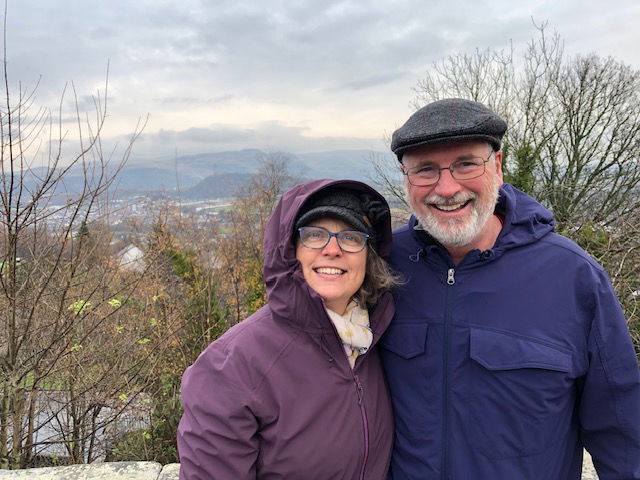Stirling Castle, Scotland
Built atop a volcanic plug with steep cliffs on three sides, Stirling Castle provided a stout defense for Scottish royalty for centuries. Stirling Castle is one of the largest and most historically significant castles in Scotland.
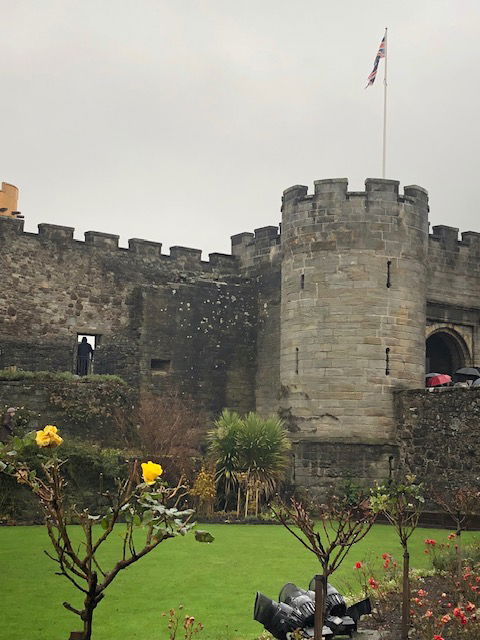
The Forework Gatehouse provides entry to the main part of Stirling Castle. The umbrellas passing under its arch on the right edge of the photo indicate the weather we encountered during our visit in late November. Despite the damp and chill, a yellow rose blooms in the foreground while a palm flouishes at the base of the tower.
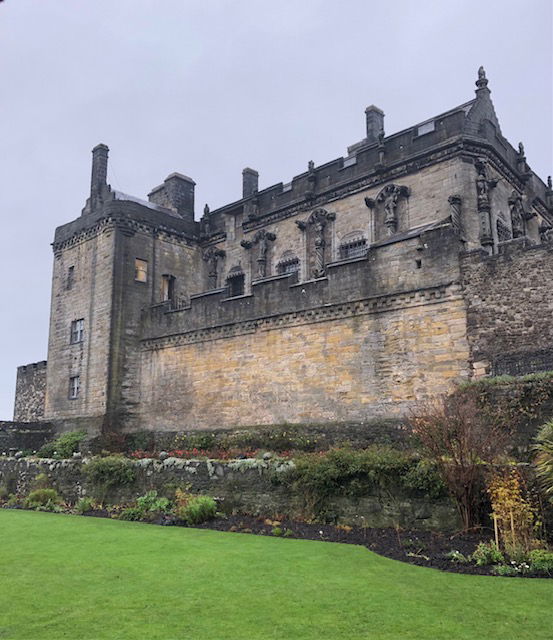
View of The Royal Palace with the Prince's Tower and gardens below. Although it began as a medieval castle, the Royal Palace was built in the French Renaissance style with statues that are German-inspired in the east facade's alcoves.
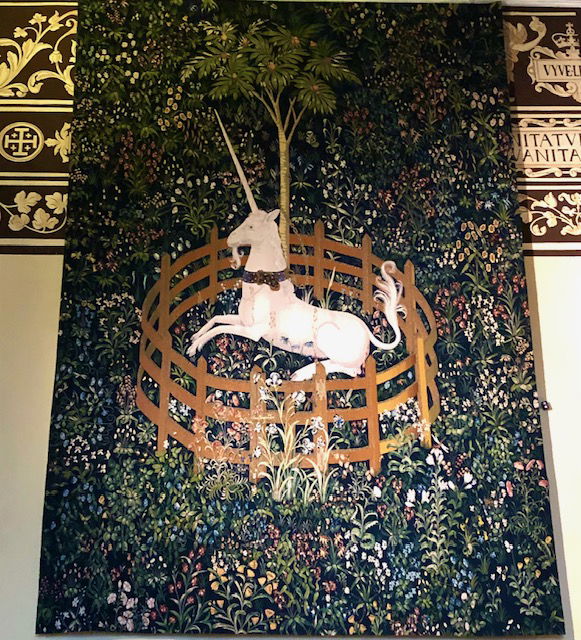
The Castle Exhibition features 900 years of history including the fact that Stirling Castle was the childhood home of Mary Queen of Scots. Portrayed on the tapestry above is Scotland's official national animal, the unicorn.
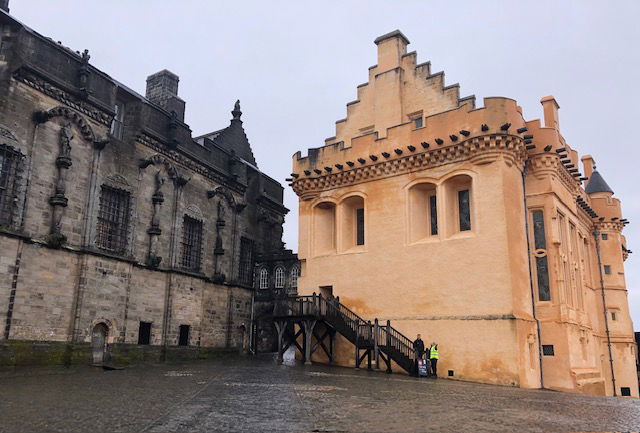
To the right of the Royal Palace lies the blonde Great Hall, which is the largest medieval banquet hall built in Scotland. The contrast in this photo gives a hint of the architectural importance of Stirling Castle. At the end of our visit, while we attempted a selfie or two, a couple of friendly gentlemen offered to take our picture for us. They were there doing a story for the BBC! They captured well the perspective of the valley behind us and below Stirling Castle. What a lovely way to spend Brian's birthday.
